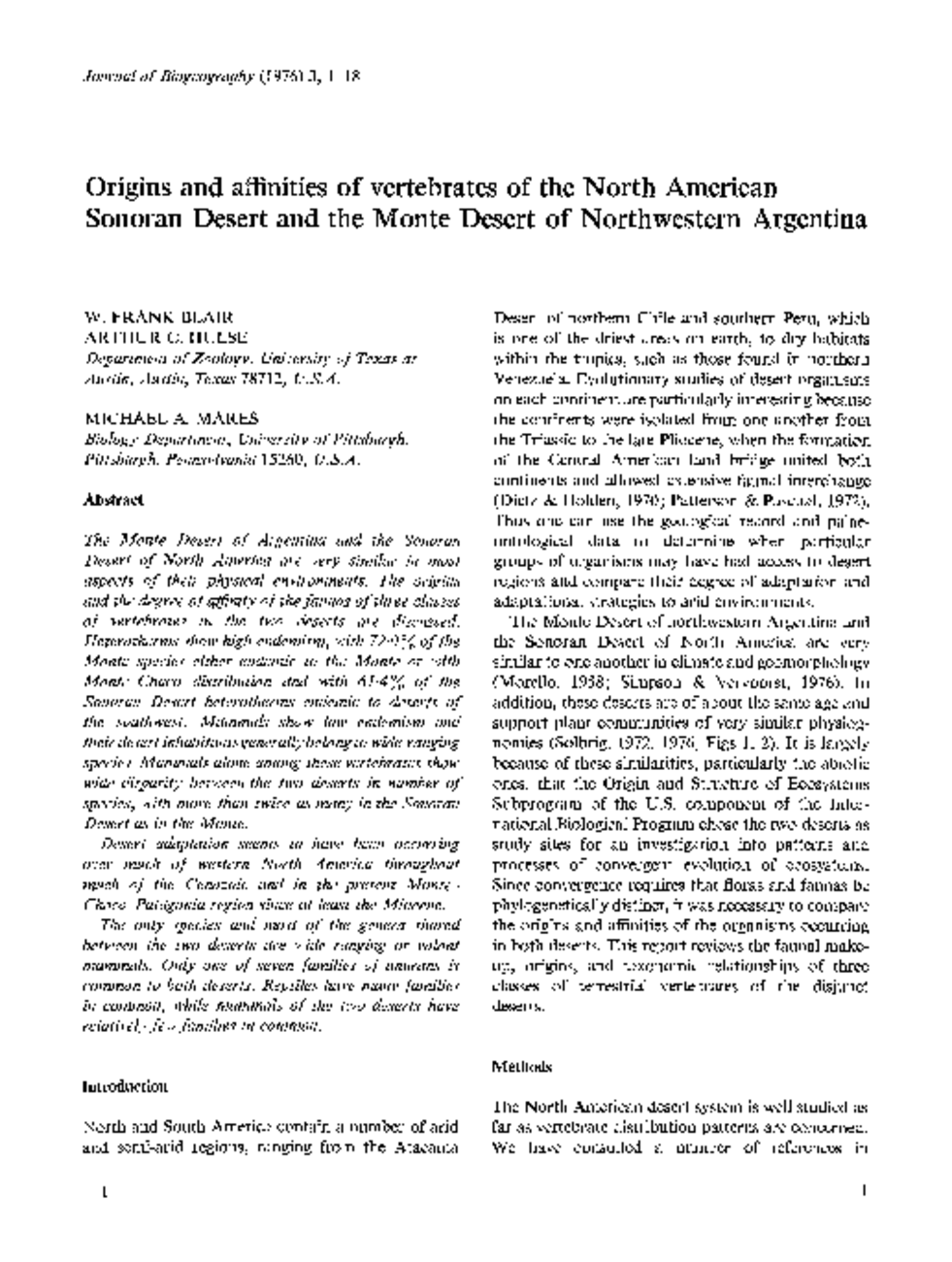Origins and affinities of vertebrates of the North American Sonoran Desert and the Monte Desert of Northwestern Argentina
The Monte Desert of Argentina and the Sonoran Desert of North America are very similar in most aspects of their physical environments. The origins and the degree of affinity of thefaunas of three classes of vertebrates in the two deserts are discussed. Heterotherms show high endemism, with 72 0 % of the Monte species either endemic to the Monte or with Monte-Chaco distribution and with 61-4% of the Sonoran Desert heterotherms endemic to deserts of the southwest. Mammals show low endemism and theirdesertinhabitantsgenerallybelongto wide-ranging species. Mammals alone among these vertebratesshow wide disparity between the two deserts in number of species, with more than twice as many in the Sonoran Desert as in the Monte.
Desert adaptation seems to have been occurring over much of western North America throughout much of the Cenozoic and in the present Monte- Chaco-Patagonia region since at least the Miocene.
The only species and most of the genera shared between the two deserts are wide ranging or volant mammals. Only one of seven families of anurans is common to both deserts. Reptiles have many families in common, while mammals of the two deserts have relatively few families in common.

